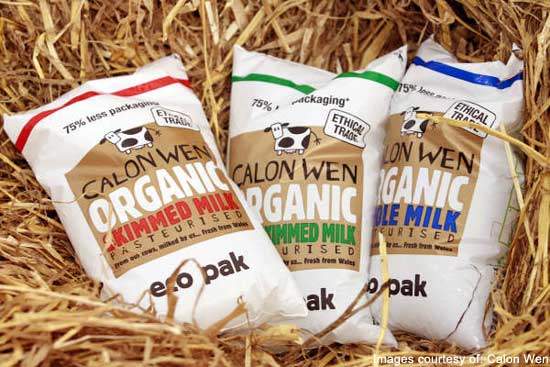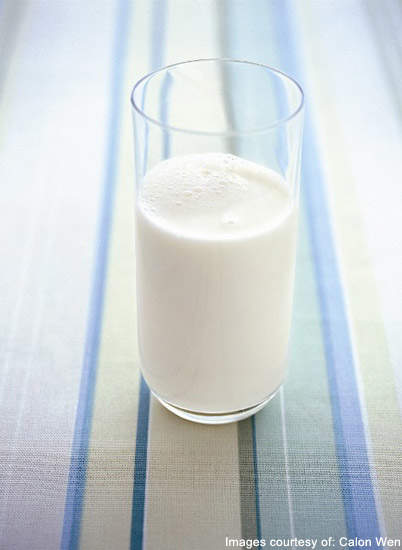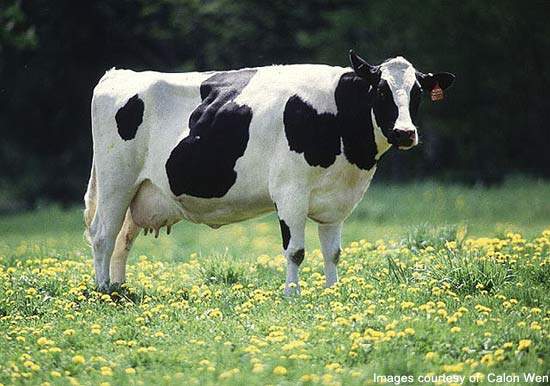An increase in recycling across the UK in recent years has highlighted the need for retailers and suppliers to concentrate on reducing the quantity of packaging for everyday products.
Milk packaging has had a good recycling rate in the past, with glass bottles having the ability to be reused up to 40 times before needing to be recycled.
However, the decline of the doorstep delivery led to the majority of milk being sold through supermarkets where a variety of packaging formats have been used including Tetra Pak cartons and low density polyethylene plastic milk containers.
The latest innovation for the packaging of milk uses plastic bags.
Green innovation
Plastic milk bags were championed in the UK by supermarket Waitrose and Wales’ Calon Wen Organic Milk Co-operative. Calon Wen is a co-operative of 20 family–run organic dairy farms. It supplies pure, unadulterated milk, which is pasteurised, packaged and sold. It does very little processing to retain the goodness of milk and flavour. It was the first dairy in the UK to achieve the Soil Association Ethical Trade Symbol.
In June 2007, the co-operative launched eco-pouches aimed at environmentally conscious customers who were trying to reduce the plastic garbage. Waitrose conducted a trial of the milk bags across 21 of its stores in Wales, Bath and London.
As the initial response was positive, the milk bags were rolled out to 50 Waitrose stores (February 2008) across the UK. The milk bag was awarded the ‘Best New Product’ at the 2008 Green Business Awards.
However, due to poor demand for the milk bags a lot of milk remained unsold, resulting in losses to the company. Therefore in first the quarter of 2010, Waitrose stopped selling milk in eco pouches.
Benefits of the plastic milk bag
The glass milk bottles were introduced in the 1880s. Milk consumption in Britain was as high as 180 million pints of milk a week, 90% of which was sold in plastic bottles.
These were replaced by TetraPak cardboard containers in the 1960s. While plastic milk cartons were declared to be recycled successfully, estimates suggested only one in four was recycled.
In the UK, 4% of household waste was of dense plastic and just 1% could be recycled.
Calon Wen worked out that if milk bags were introduced, they would save over 100,000t of plastic waste going to landfills.
Two other Welsh companies, South Caernarfon Creameries and Tomlinson’s Dairies, also started selling milk in 2pt bags in their local areas, reviving doorstep deliveries. Doorstep storage trays and storage jugs were provided
The bags used 75% less plastic than a normal plastic milk carton and could be manufactured from a biodegradable plastic, which breaks down in six to nine months.
Packaging systems
The concept of milk sold in bags was tried by the Co-op in the UK in the 1970’s without success. The Channel Islands also introduced the concept in the late 1970’s but it fell out of favour, being replaced by one of the Tetra Pak family of cartons.
However, the format is successfully used in India and Canada, where 65% of all fresh milk is sold in bags.
The milk is purchased in 1l bags to fit a reusable plastic jug, which must be purchased separately. The jug can fit into any refrigerator door and can store 75 empty eco-packs. Once the bag is placed in the jug, a corner is snipped off with a scissors. When the bag is empty it can be recycled.
Financing
The 1l bags cost a little more than the equivalent plastic packaged variety at 91p. The reusable jug required an investment of £1.99.






